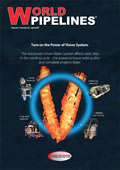Editorial comment
‘Made in America’ is something you don’t see very often anymore. Clothes sold in US stores are typically made in Cambodia or Vietnam; electronic goods are mostly manufactured in China; fruits and vegetables fly thousands of miles to get to western dinner plates and, in fact, even the forks, knives and spoons with which Americans eat their food are no longer made in the USA (the last remaining flatware manufacturer in the US closed in 2010).
Register for free »
Get started now for absolutely FREE, no credit card required.
So the relatively recent domestic shale gas discoveries are quite a departure from this trend: suddenly the US has bountiful supplies of energy and what’s more, it’s homemade!
Shale gas is produced and stored in shale formations about a mile underground. The Barnett and Eagle Ford (Texas), Haynesville (Louisiana and Texas) and Bossier (Louisiana) shale plays are all already playing an important part in the energy mix in the US.
The Barnett Shale produces approximately 6% of all natural gas produced in the lower 48 states. Recent discoveries of emerging plays in Appalachia, Northern Louisiana and South Texas indicate the widespread potential of finding new shale gas resources across the country.
The consulting firm ICF forecasts that tight gas, coalbed methane, and shale gas will make a major contribution to future North American gas production. So-called unconventional gas production is forecast to increase from 42% of total US gas production in 2007 to 64% in 2020. Figures suggest that the US has a future potential supply of natural gas of over 2000 trillion ft3, which, at current domestic consumption levels, is enough natural gas to supply the nation for the next hundred years.
The question that naturally follows this assertion is: how much of this homemade natural gas will be exported to foreign markets, rather than consumed domestically?
The boom in shale gas and an anticipated rise in global gas demand means that North America is predicted to become an LNG exporter within the next few years, with Gulf coast liquefaction facilities serving the European market and plants further north in British Columbia serving Asian demand.
In fact, recent research has indicated that the global natural gas glut, which saw supplies soaring and prices falling at a time of world recession a couple of years ago, will disappear sooner than expected. It is believed that rebounding world economies will help balance the supply/demand level and, with demand expected from the BRIC countries, as well as Japan and the Middle East, gas bottlenecks could soon ease.
Of course the US isn’t going to deprive itself of its own natural gas, and is expected to be completely self-sufficient in natural gas by 2020.
Which brings me to the recent news that BP and ConocoPhillips are withdrawing their joint plans to build an Alaska natural gas pipeline to bring Alaskan North Slope gas to the lower 48 states. The US$ 35 billion Denali project has been cancelled: booming shale production and low prices meant insufficient demand for the new route.
Formed in 2008, the Denali joint venture was the competitor for the TransCanada Alaska pipeline project (which is still moving ahead). In three short years, and US$ 165 million in investment later, the Denali project has been brought to its knees, such is the changed landscape of the US domestic gas market.


